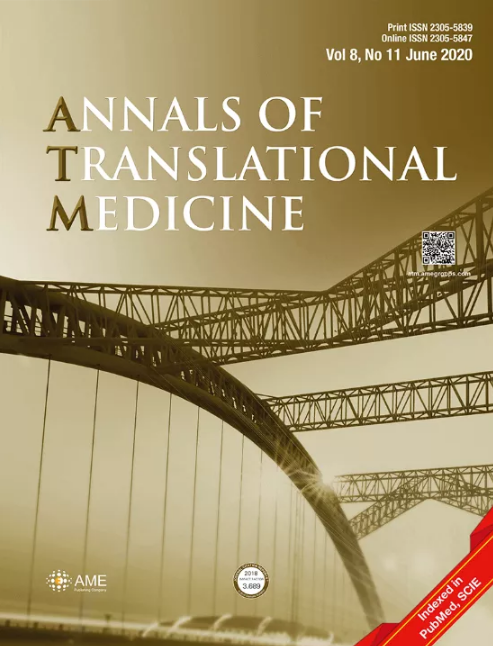

Release time:2020-07-02
Minghao Lin, Naiyan Gan, Jun Chen, Kai Lv, Shengfu Han, Huazhen Huan

Department of Cardiac Surgery, Yulin First People’s Hospital, Yulin, ChinaContributions: (I) Conception and design: All authors; (II) Administrative support: N Gan; (III) Provision of study materials or patients: All authors; (IV)Collection and assembly of data: All authors; (V) Data analysis and interpretation: M Lin; (VI) Manuscript writing: All authors; (VII) Final approvalof manuscript: All authors.Correspondence to: Naiyan Gan. Yulin First People’s Hospital, 495 Education Centre Road, Yuzhou District, Yulin, China. Email: gannaiyan@163.com.
Background: The causes of valvular disease in China are complex, with a broad age distribution.For patients with early mechanical valve replacement, the quality of life is affected by postoperativeanticoagulation-related complications. Since 2005, we have used bioprosthetic valves to provide more optionsfor patients. In this study, we retrospectively analyzed the 14-year follow-up data of patients undergoingBalMedic bovine pericardial bioprosthetic valve replacement (manufacturer: Beijing Balance Medical TechCo., Ltd.) to evaluate its intermediate- to long-term clinical effectiveness.
Methods: From 2005 to 2014, 336 BalMedic pericardial bioprosthesis valves were implanted in 299 patients(mean age 53.5 years, 59.86% female) at Yulin First People’s Hospital. Among followed up 290 dischargedpatients, 284 underwent aortic valve replacement and mitral valve replacement (AVR group, MVR group)for further grouping analysis, 6 underwent tricuspid valve replacement (TVR). The mean follow-up was7.7±2.5 years (5 to 14), for a total of 2,196 valve-years, 98.27% of the patients completed follow-up.
Results: The perioperative mortality was 3% (9/299). After discharge, 68 patients (23.4%, 68/290) died,and 36 (12.4% 36/290) underwent the second valve replacement. The overall 5- and 10-year survival rateswere 89.95% and 72.53%, respectively. For patients undergoing AVR alone, the overall 10-year survival rateswere 80.64%, the reoperation-free rates were 92.94%, and the SVD-free rates were 90.95%. For patientsundergoing MVR and double valve replacement (DVR group), the 10-year survival rates were 67.21% and82.90%, the reoperation-free rates were 72.26% and 73.33%, the SVD-free rates were 58.90% and 53.80%,respectively. Subgroup analysis by age showed no significant intergroup difference in overall survival but asignificant intergroup difference in reoperation-free and SVD-free rates (P<0.05).
Conclusions: With a similar 10-year overall survival rate as its foreign counterparts, BalMedic bovinepericardial bioprosthesis is reliable choice for both aortic valve and mitral valve. In patients undergoingAVR, the BalMedic valve is superior to the similar foreign counterparts in overall survival, reoperation-freesurvival, and SVD-free rates. While in MVR or DVR, Chinese patients are younger because of differentetiology, postoperative outcomes show non-inferior to those from the foreign counterparts.
Keywords: BalMedic ® ; bovine pericardial bioprosthesis; intermediate- and long-term follow-up
Submitted Mar 12, 2020. Accepted for publication Jun 07, 2020.
doi: 10.21037/atm-20-3790
View this article at: http://dx.doi.org/10.21037/atm-20-3790